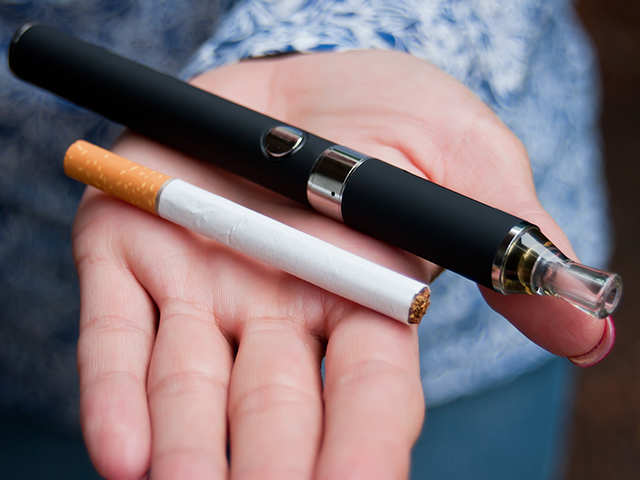The Nhava Sheva Customs has intercepted a 400ft container importing banned e-cigarettes in the guise of household merchandise. Officials of the Special Intelligence and Investigation Branch (SIIB) of Jawaharlal Nehru Customs House, Nhava Sheva, based on intelligence intercepted an import container misdeclared as water bottles, magnetic buttons and belt buckles.
The physical examination of the suspect container led to seizure of 45,686 units of e-cigarettes worth Rs3 crore market value, concealed in the consignment of regular household items. Import of e-cigarettes is prohibited under the Prohibition of Electronic Cigarettes (Production, Manufacture, Import, Export, Transport, Sale, Distribution, Storage and Advertisement) Act, 2019.
What are e-cigarettes?

- E-cigarettes come in many shapes and sizes. Most have a battery, a heating element, and a place to hold a liquid.
- E-cigarettes produce an aerosol by heating a liquid that usually contains nicotine—the addictive drug in regular cigarettes, cigars, and other tobacco products—flavorings, and other chemicals that help to make the aerosol. Users inhale this aerosol into their lungs. Bystanders can also breathe in this aerosol when the user exhales into the air.
- E-cigarettes are known by many different names. They are sometimes called “e-cigs,” “e-hookahs,” “mods,” “vape pens,” “vapes,” “tank systems,” and “electronic nicotine delivery systems (ENDS).”
- Some e-cigarettes are made to look like regular cigarettes, cigars, or pipes. Some resemble pens, USB sticks, and other everyday items. Larger devices such as tank systems, or “mods,” do not resemble other tobacco products.
- Using an e-cigarette is sometimes called “vaping.”
- E-cigarettes can be used to deliver marijuana and other drugs.











More Stories
Norway Chess: नॉर्वे शतरंज टूर्नामेंट में विश्व चैंपियन गुकेश ने कार्लसन को हराया, पिछली हार का भी लिया बदला
Bengaluru Couple Bows to Auto Driver After Viral Incident
Ishaan Khatter makes fans scream as he pulls off butter smooth dance moves at Miss World 2025: Watch